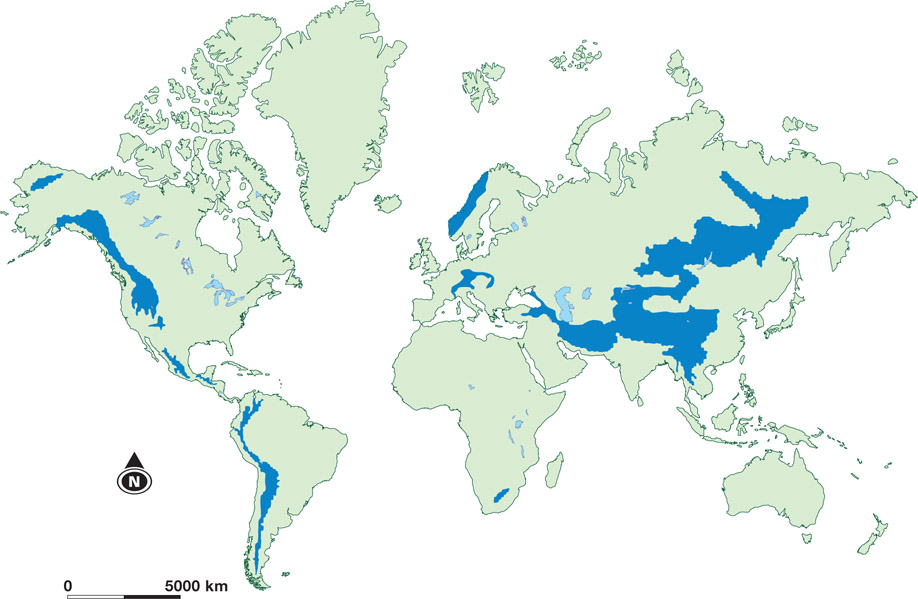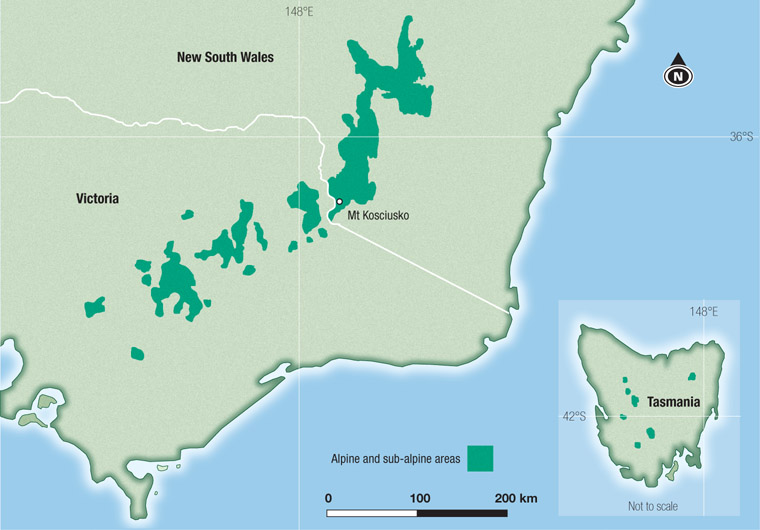2.5 Alpine biomes
The alpine (or mountain) biome is the anomaly: it doesn’t fit the pattern based on climate that has been observed to this point. As can be seen in Source 2.15, it stretches north and south from the Equator in North and South America and stretches east to west across Eurasia.
We need to take a different approach to examine this biome. In countries where mountains tower thousands of metres into the sky, a simple field trip from the base of the mountain to the top of the mountain would have shown the main characteristics of this biome. Australia doesn’t have mountains that rise many thousands of metres into the sky. Many Australians would not notice that vegetation patterns change with altitude, but they know where Australia’s alpine areas are and they know that at certain times of the year the higher parts of Australia’s eastern highlands are snow-covered.
The world map (Source 2.1) did not show any alpine areas in Australia because the scale of the world map is too small. The alpine areas in Australia can only be seen on larger-scale maps.
Sources 2.17 and 2.18 show some of the features of the alpine biome in Australia. It is clear that the vegetation changes as altitude increases.
What happens in other parts of the world with ‘real’ mountains, which are normally over 3000 metres high? Australia’s highest ‘mountain’ is only 2228 metres high.
-
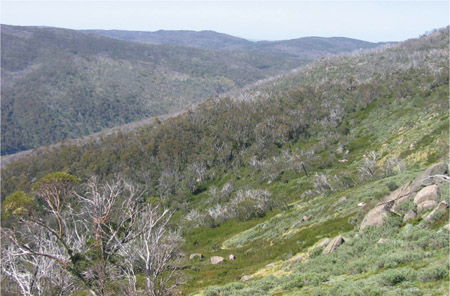
Source 2.17 Vegetation in a valley close to the summit of Mt Kosciuszko, New South Wales -
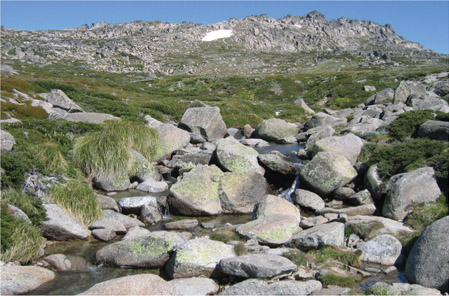
Source 2.18 Looking towards the summit of Mt Kosciuszko in summer
Source 2.19 Vegetation changes with altitude and latitude (02:53)
The study of Australia’s ‘mountain’ biome shows that the vegetation changes as the altitude increases. Studies in other parts of the world show the same changes. For many places, models can be obtained that show the changes in vegetation as altitude increases far beyond the heights of mountains in Australia. Source 2.19 is one example of these models.
Source 2.19 shows there is a change of vegetation with altitude (zonation). It also demonstrates that the same types of changes occur with changes in latitude.
The relationship is simple:
- Vegetation changes as altitude changes.
- Vegetation changes in a similar way as latitude changes between the Equator and the poles.
There is a simple reason for this. Temperature decreases as altitude increases. Air expands as it rises, as it expands the pressure decreases, and as pressure decreases, air cools. This means that it is possible in some mountainous areas near the Equator to begin a mountain climb in rainforest and finish it at the top of a snow- and ice-covered peak.
Two other factors affect the vegetation pattern in mountain biomes. Many mountain ranges are close to the coast. They block rain-bearing winds that move onto land from the sea and force these winds to rise. As the winds rise, the air cools and water condenses out of the air to form clouds. This often results in heavy rainfall, known as orographic rainfall. This can produce biomes associated with high rainfall, particularly rainforest, on the coastal sides of the mountains. The inland slopes of the mountains often receive little rainfall, so very different biomes, such as savanna and desert, may be found on these slopes. These areas are said to be in a rain shadow.
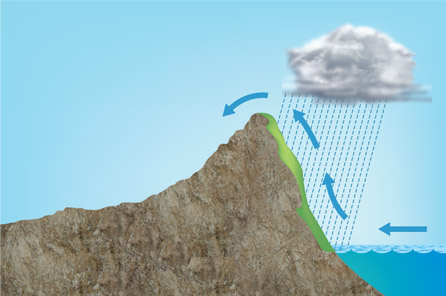
The other factor that makes mountain biomes so complex is the impact of the sun’s rays as they warm the land. Mountain slopes that receive direct heat from the sun lose their snow cover quickly.
Mountain slopes that do not are cooler, and have a slightly different vegetation pattern. This warming effect is known as aspect. It affects mountain biomes closer to the poles most: some slopes only receive sunlight for a few months of the year.
DEVELOPING YOUR UNDERSTANDING 2.5
Using the internet, find a map showing the distribution of some saline lands within Australia. Describe where areas of salinisation occur.
Divide the class into three groups to study:
- the coniferous forest biome
- the temperate deciduous forest biome
- the tundra biome.
Complete the following tasks, then give a short presentation of your findings.
- Describe the vegetation character of the biome.
- Identify the factors which have given rise to the development of the biome.
- Identify the special adaptations plants have made to survive in the biome.
- Examine the relationship between the plants and animals in the biome.
- Discuss how animals have adapted to survive in the biome.
The majority of animals in the alpine biome are warm-blooded. Such animals include the alpaca, the llama, the chinchilla and the snow goat.
